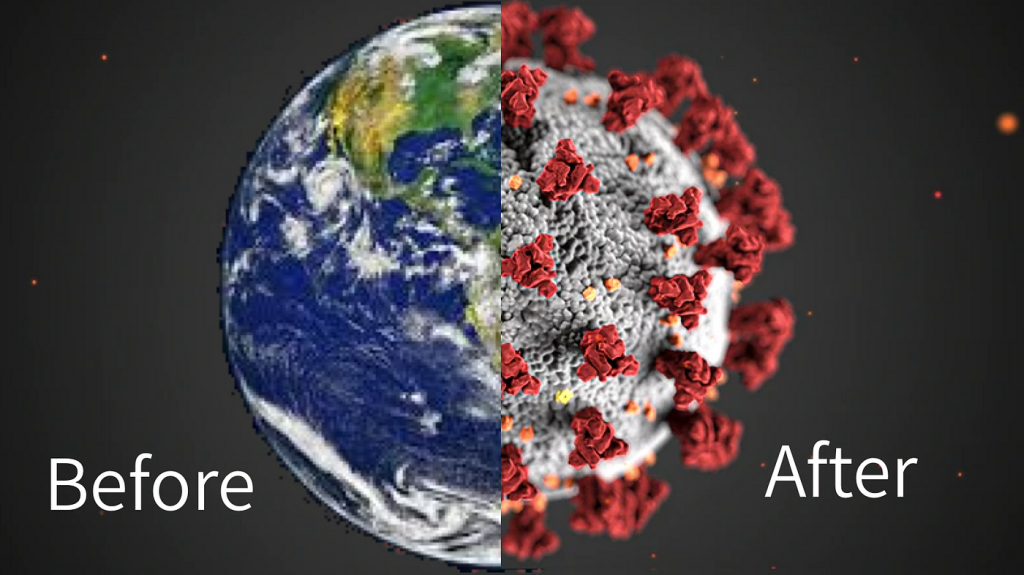COVID-19 is the mother of all triggers. You want to react and being proactive is realllllllly hard. Your team looks up to you with one question in their minds
“What should we do now?”
But asking “what to do?” is a question that is reactive by nature and in times like these, we should do everything in our power to resist reactivity. So I found that asking people to define their “Before & After Vision” is really effective in reducing the team’s reactiveness to challenges COVID-19 brings at our doorstep.

Step 1: revisiting the 2020 strategy and core assumptions
In the past weeks, when my coachees (startup CEOs and founders) share their current COVID-19 related challenges I started asking them to “retrace” their steps and recall their “pre-COVID-19” strategy. To revisit their original goals and plans for Q2 2020 and 2020 in general.
At the beginning some resist. It is really hard to discuss the “old plans” when “everything has changed” and everyone is pressing the CEO to know what they should DO next.
But I ask them to “please entertain me for 10 minutes, just forget about COVID 19 and remember the great plan you had just four weeks ago” and I listen… And as they recall their plan, I drill down and encourage them to identify the core assumptions that stood behind their strategy.
And the incredible thing I found is that in most cases, most of the core assumptions behind their strategy are still intact. And as the session progresses you can see them relaxing into their chairs as listening to their own words helps clear the COVID-19 fog.
Step 2: asking “what has changed?”
And then I ask the one simple question I find too many people skip these days: “What has changed?” and when they start describing the change in their circumstances I stop them and clarify…
“I meant, what has changed in your core assumptions as a result of COVID-19?”
And this is where they stop and take a deep breath. It is a mixture of relief and deep thought. And then one by one they breakdown the core assumptions they had just 4 weeks ago, the plans their boards approved, the goals they so wholeheartedly pitched to their teams and ask “what REALLY changed?”
Step 3: asking “now what should we do?”
And then, only then, when there is an organized image of their “before & after”, of what has changed in their core assumptions, are they ready to ask “NOW what should we do?”
One by one their “old” plans can be revisited with a fresh prism of their new assumptions. And for each planned initiative they can ask “What has changed? What should we do?”…
And gradually a new plan emerges. A plan that is born from examining, first, what is still great and working for them and only then asking what has changed. A plan that minimizes reactiveness and maximizes every ounce of advantage and opportunity they had going for them just four weeks ago.
Step 4: presenting your before & after vision
The reason that capturing your before & after vision is so effective is that now instead of presenting to the team a “what should we do now?” presentation and installing in them a sense of reaction, you can ensure your team has a clear line of sight going back from your pre-COVID-19 strategy and into the next few months and the questions that would need to be answered. By installing in them your clear before & after vision you are putting the present in perspective. And perspective can’t be underrated these days!
Think of a table with 4 columns:
- Our pre-Covid-19 assumption
- What changed in the world
- How did it impact our assumption
- Now what should we do?
And by the time your “before & after table” is finished a sentence in your presentation might sound something like this…
“Before COVID-19 we believed [that]…”
“Because of COVID-19 [this] has happened, which changed our assumptions [that] and led us to assume [that]…”
“Which is why we believe we should do [this]…”
Step 5: Asking others to create thier before & after team vision
Your team may ask “What should we do next?” but sharing with them the logic of what has changed in your assumptions first, and only then addressing the questions regarding what should be done will arm them with the tools to map their own domains and come with their own team’s “Before & after” which will ensure their team is proactive when coming up with their own post-COVID-19 plans.
So what has changed?